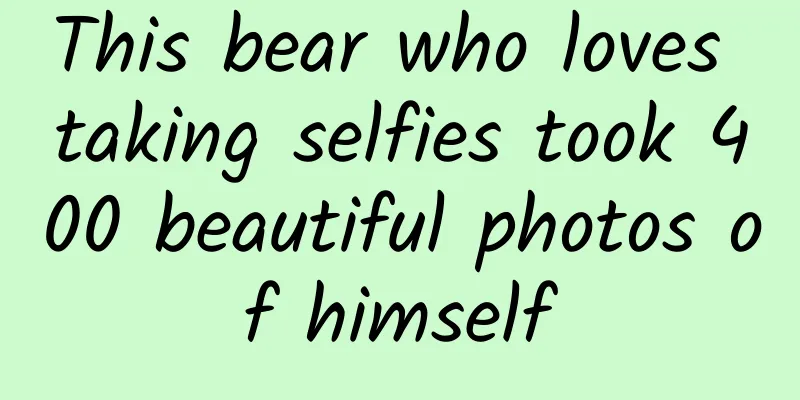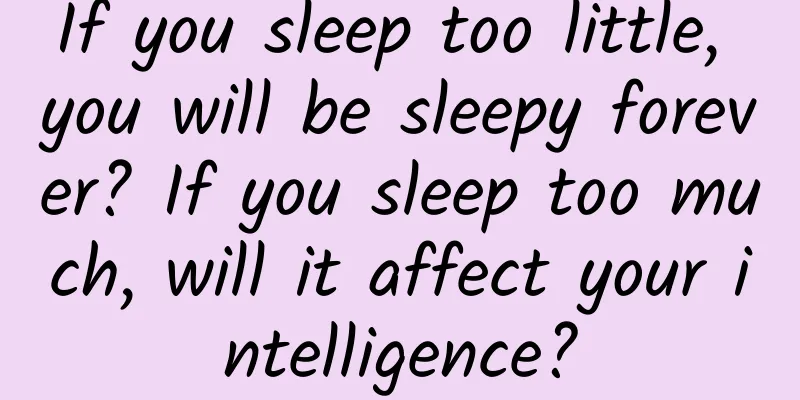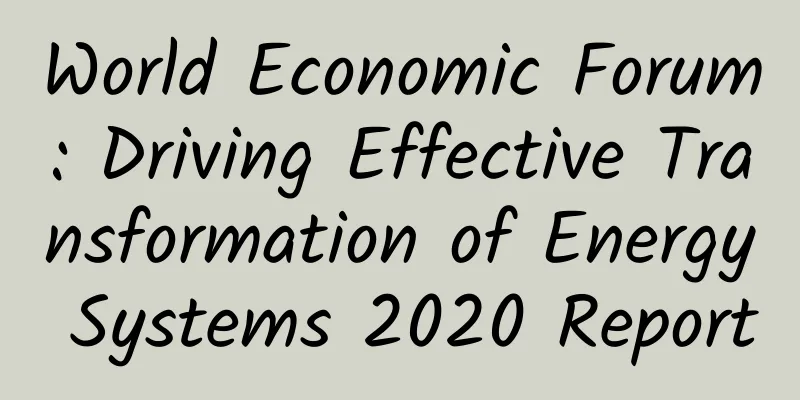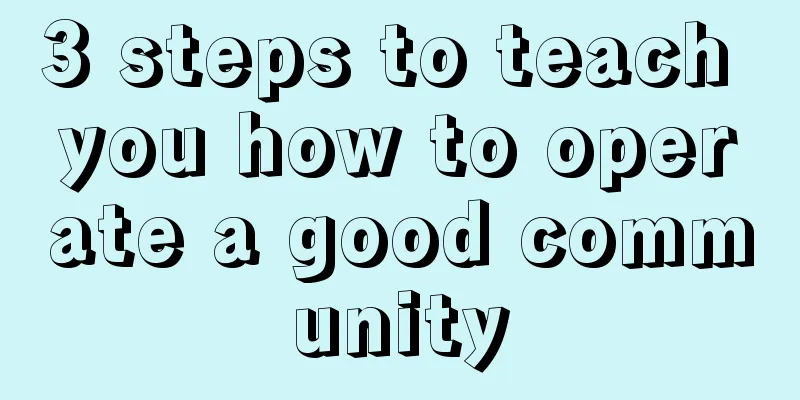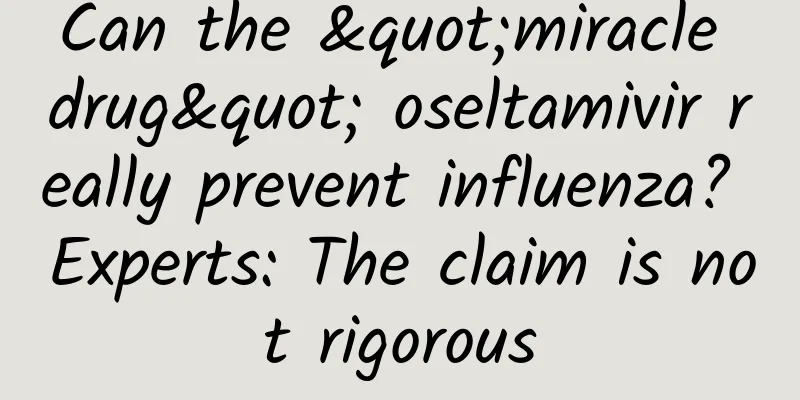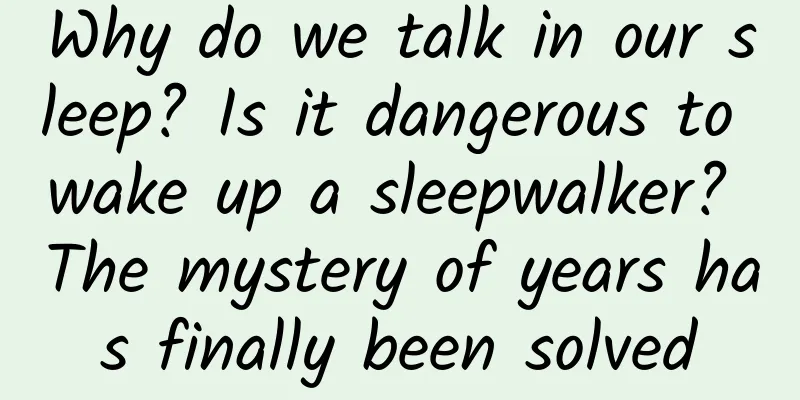Lee Smolin: Finding a way beyond quantum mechanics
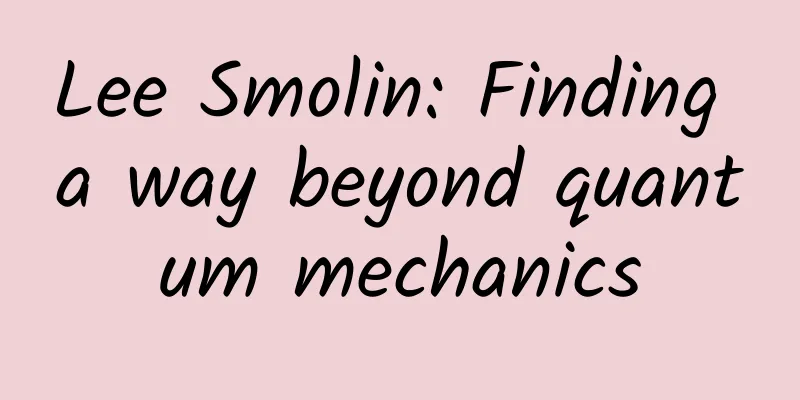
|
Quantum mechanics is the most successful scientific theory today, but it is also a "problem child". This theory full of paradoxes and mysteries hides many things that cannot be explained intuitively. One of its "symptoms" is that the more we understand reality, the less we know how to describe reality - for example, if we ask, "What is a particle?", we can get many different answers. It can even be said that quantum mechanics has shaken our view of the nature of reality, and its interpretation will rise to a disagreement on the nature of science, such as answering questions such as "Does the natural world exist in opposition to our consciousness?" and "Can we understand and describe these properties?" For a hundred years, physicists have given different answers. For example, the author of this article, theoretical physicist and one of the founders of loop quantum gravity theory, Lee Smolin, gave the answer of "yes". Like Einstein, they are called realists. The other faction, headed by Niels Bohr, belongs to anti-realists (including quantum cognitivists and operationalists), who have the upper hand in the development of physics in the 20th century. Obviously, this does not satisfy the realists. Smolin hopes to build a more realistic theory to describe the microscopic world. The book "Einstein's Unfinished Revolution: The Search for What Lies Beyond the Quantum" introduces two different views. The book is mainly divided into three parts: the basic concepts of quantum mechanics; the work of realists after the 1950s, such as Bohm and Bell (Fanpu has recommended "Bohm Mechanics - Quantum Theory Outside the Textbook"); some authors and new attempts by others. This article explains quantum mechanics from the information perspective based on John Wheeler's "Everything comes from quantum bits" and introduces the basic idea of "relational quantum mechanics". This article is authorized to be selected from "The Truth of Quantum Mechanics: Einstein's Unfinished Revolution" (Sichuan Science and Technology Press, September 2021 edition) Act III "Alternatives to Revolution", the content has been deleted, and the title and subtitle are added by the editor. By Lee Smolin Translated by Wang Qiaoqi Ultimately, we have to look for theories that have the potential to be the right ontology of the world. After all, the deepest burning desire of all true physicists is to understand the nature of reality. —Lucien Hardy In the past few years, research in quantum foundations has been very active and growing. After 80 years of being dormant and discouraging any physicist who wanted to become an expert in this area, becoming an expert in quantum foundations is now a good career path. This is of course a good thing, but most progress in the field and most young people today tend to be anti-realistic. At present, the goal of most new research in this field is not to revise quantum theory to make it more complete, but just to give us a new way to talk about it. Lee Smolin … These advances have also deepened our understanding of how quantum theory is constructed. For example, Hardy pioneered a new method for finding the simplest set of axioms from which to derive the mathematical form of quantum mechanics. Some of these axioms are simple and tell us that all the theory is correct; another axiom encompasses all the weirdness of the quantum world. Meanwhile, in such an environment dominated by operationalist approaches, there is little room for the old-fashioned realists who are struggling to find a complete quantum theory to explain all kinds of events. Some of these realists are supporters of the many-worlds theory, but there are also a few who support Bohm, and a few realists who have developed wave function collapse theories. Even fewer people try to search for a realistic version of quantum mechanics outside of these existing methods. Most of the people who study this problem are experts in other fields themselves, and some have achieved great success in their own fields, such as Stephen Adler and Gerardus 't Hooft, who won the 1999 Nobel Prize in Physics. We cannot fit neatly into the already active field of quantum foundations, mainly because our focus and ultimate goals and the theories we have proposed to achieve these goals cannot be expressed in the operationalist language, which is the mark of experts in quantum information theory. Even so, we have not stopped searching for a complete and realist picture of the quantum world. I think, as Hardy says in the opening remarks of this chapter, that many physicists prefer realist interpretations to operationalist ones and would certainly be interested in realist versions of quantum mechanics that overcome the shortcomings of existing approaches. Part of the reason operationalist approaches are so popular at present is that there are still few realist approaches that are close to the truth that we can choose from. The rest of this book is about the future of realist approaches to quantum physics. Before we forget about nonrealist approaches, let’s see if their recent popularity offers something to ponder. Avoiding measurement: everything comes from quantum bits The first lesson I can draw from this is that there are many ways to describe the difference between the quantum world and the classical world of Newtonian physics. If you are willing to adopt the anti-realist view of quantum mechanics, then you have many choices. You can choose to side with Bohr, who radically proposed that science is just an extension of the common language we use to communicate the results of our experiments to each other. Or you can embrace "quantum Bayesianism", which holds that wave functions are nothing more than representations of our thoughts and that predictions are just another way of saying gamble. Or you can side with the purely operational view, which is to talk only about the processes of preparation and measurement, and the relevant theories of pure operationalism are based on these processes. These theoretical schools have one thing in common, that is, they all avoid the measurement problem, or to be more precise, they all remove the measurement link from the definition, because there is no possibility of describing the observer and his or her observation tools using quantum states. The core concept of some new theories is that the world is made of information, which we can summarize from John Wheeler's famous saying "everything is a bit". The modern version of his saying is "everything is a quantum bit (qubit)," where the quantum bit is the smallest unit of quantum information, which can be seen as a quantum binary choice in our previous story about pet preferences. In practical applications, this model assumes that all physical quantities can be reduced to a finite number of quantum "yes or no questions", and the time-varying evolution of the rule-constrained process can be understood as quantum information processing in the world of quantum computers. This means that the time-varying process of the system can be expressed as a series of logical operations applied to one or two quantum bits at a certain point in time. John Wheeler expressed it this way: Everything comes from bits means that all objects in the physical world have essentially non-material origins and non-material explanations. What we call reality comes down to asking “yes or no” questions and recording the responses of instruments. In short, everything physical theoretically originates from information, and we all have a hand in this universe. [1] When you first hear this idea, you might think it’s just a casual remark, but Wheeler was serious. Another way to put it more succinctly is this: “Physics involves the observer, the observer’s involvement generates information, and information generates physics.”[2] Wheeler once said, "We all have a hand in this universe." He meant that the universe was created by our observation or perception of it. Yes, to which you could respond, "But before we could observe or perceive, we had to be created in the universe, and with the help of the universe." Wheeler would respond, "Yes, and what's the problem?" What can we learn from conversations like this? Some systems with a finite number of possible outcomes can be described in this way, and doing so can indeed guide the way forward in physics, for example, bringing to the fore the importance of the concept of entanglement in quantum physics. However, this model cannot be easily applied to systems involving physical variables with infinitely many possible outcomes, such as the electromagnetic field. Nevertheless, this quantum information approach to the foundations of quantum mechanics has had a positive impact on many areas of physics, from the core field of solid-state physics to research on string theory, quantum black holes, and more. What kind of information definition is needed for the microscopic world? We should be careful to distinguish between several different conceptions of the relationship between physics and information. Some of these conceptions seem to me to be useful but trivial, while others are quite radical and need further justification. Let's start with the definition of information. Claude Shannon, the founder of information theory, gave a very useful definition of information. His definition was based on the concept of communication, which envisions a channel for the transmission of information from a sender to a receiver. By definition, these channels share a language, which is the language that gives symbols meaning. The receiver of the information receives the information and has to understand the meaning of the information through a series of "yes or no questions". The number of these "yes or no questions" determines the amount of information transmitted. By this standard, only a few physical systems can be viewed as information channels between senders and receivers who share a language. The universe as a whole is not such an information channel. The power of Shannon's definition of information is that it can measure how much information is transmitted from the semantic context, that is, from the meaning of the information. According to Shannon's definition, the sender and receiver of the information share a set of semantic rules that give the information meaning, but you don't need to know this set of rules to measure the amount of information carried by a message. Without such a set of semantic rules, a message would have no meaning. For example, to measure the amount of information in a message, you first need to know something about the language used in the message, such as the relative frequency of various letters, words, or phrases in the community that uses this language. This information about the language environment does not necessarily need to be encoded in every message. If you do not specify the language, the message loses information under Shannon's definition. More importantly, this means that the information being transmitted must use the language shared by the sender and receiver. Unregulated symbols separated from the shared language of both parties cannot carry any information. Shannon's definition of the measurement of information depends on the language used in the message and various other aspects. These rules are shared by the sender and receiver of the information, but are not necessarily encoded in the information itself and are not pure physical quantities. Understanding the intentions of speakers and the way they convey meaning is a long-standing problem in the philosophy of language. The fact that this problem is difficult does not mean that intentions and meanings are not part of the world. They are indeed part of the world, but their existence depends on thinking. Shannon's definition of information is a measure of what happens in this world of meanings and intentions. This definition of information is quite good, even if we do not have a deep understanding of how meanings and intentions are embedded in the natural world. To make this clearer, let me give you another example. After a heavy rain, I hear water dripping from a leaky sewer pipe. The rhythm of the dripping water seems to be irregular, but the sound of the dripping water carries no information, either to me or to anyone else, because there is no sender and I am not a receiver, so, according to Shannon's definition, there is no information in the water droplets. Alternatively, we can use the long and short intervals between the dripping water drops to form a Morse code to transmit a message. The reason why these two situations produce very different results is that the former lacks the intention to transmit information, while the latter does, and this intention is important: information in Shannon's definition must be accompanied by the intention to transmit information. For a realist who wants to understand knowledge beyond the known world of human beings, Shannon's definition of information is not very useful when applied to the microscopic world of atoms. Note 2. British anthropologist Gregory Bateson gave a less precise definition of information, calling it "difference that makes a difference", sometimes expressed as "difference that makes a difference". This definition can be expressed in physics as follows: if the change of an observable physical quantity leads to observable changes in the future of the physical system, then we consider this physical quantity to constitute information. According to this idea, almost all physical quantities have the potential to transmit information. This definition means that if the values of two physical quantities are correlated, then there is "information" between them. This is not profound, after all, it does not indicate that there is an essential interdependence between the parts of the physical world. Moreover, we already have a way to measure this correlation, and calling it "information" now is just a name that weakens the specificity of this concept, but this does not seem to bring about a change in the original concept of the world, but is more likely to confuse people. Computers process information as Shannon defined it, they take input from a sender and apply an algorithm to transform it into an output for a receiver to read, a very personal process. The embedded algorithm is a key component in defining the computational process, however, most physical systems are not computers, and the evolution of initial data into subsequent data in a physical system cannot always be explained by an algorithm or a series of logical operations. Some scholars seem to confuse these two definitions of information. They want to describe nature as a computer and the relationship between the various states of the world at different times as a computational process. I think this radical assumption is problematic. It is true that some physical systems can be approximated to some extent by computational simulation, and this is clearly possible. You can approximate the important equations in physics (such as the set of equations in general relativity and quantum mechanics) and encode them into algorithms that can be run on digital computers. This is often a very effective way to get an approximate solution to the equation, but it can only be an approximation, not an exact answer. For example, we can capture the sound of a symphony orchestra to some extent by digital means, but it will always be only an approximation. Digital means can only intercept sounds within a certain frequency range, and the full experience of listening to a symphony live can never be fully presented through digital simulation. This is why many audiences still prefer to go to a symphony orchestra in person, and why there is still a market for vinyl records, because they are purely analog recordings. The same is true in physics. A "digital simulation" of Einstein's equations can be very useful, but it will never capture all the essence of this system of equations. Although we cannot understand physics as a whole as an information processing process, we can perhaps say that the quantum state does not represent the entire physical system, but only the information about the system that we have. This is obviously in line with Note 3 of Rule 2, because as long as we get new information about the system, the wave function will suddenly change. If the wave function represents the information about the system that we have, then the probability predicted by quantum mechanics must be regarded as a subjective probability with a gambling nature. We can further regard Rule 2 as an update rule, that is, when a measurement is made, our subjective probability prediction of future experimental results will change according to Rule 2. This is the so-called "quantum Bayesianism" [3]. Relational quantum theory There is a rather elegant approach that also holds that quantum states convey information between systems, and that is called “relational quantum theory.” This theory is somewhere between operationalism and some forms of realism. It holds that quantum states are related to the splitting of the universe, to the observer and the observed, and that they represent information that the observer can know about the observed. Relational quantum theory is based on quantum gravity theory and was born out of discussions I had with Louis Crane and Carlo Rovelli in the early 1990s. Mathematicians such as Klein have previously proposed a minimalist cosmological theory, "topological field theory", and relational quantum theory is a concise mathematical description of topological field theory. These two theories do not involve any quantum description of the entire universe, and of course do not involve describing the quantum state of the universe as a whole. The quantum states in these two theories describe various ways in which the universe is split into two subsystems. We can understand this type of quantum state in this way: they carry information about the quantum system on the other side that an observer in one side of the subsystem can grasp. This brings us back to Bohr’s idea. Bohr believed that quantum mechanics necessarily requires the world to be split into two parts, one part following classical mechanics and the other following quantum mechanics, and that any splitting process will produce such a result. The model studied by mathematicians such as Klein goes further. They propose that each split of the system will produce two quantum states, that is, each of the two subsystems produced by the split has a quantum state, because we have two ways to interpret each split. Suppose Alice lives on one side of the split and Bob lives on the other side. Then Alice will regard herself as a classical observer, measuring the "quantum Bob" on the other side; while Bob's perspective is exactly the opposite. This type of model is very simple, but there is a question: How similar are the two perspectives? What is the probability that Alice's quantum description of Bob is the same as Bob's quantum description of Alice? Mathematicians believe that no matter how the universe splits, this answer will not change. Based on this premise, the probability that the descriptions of the two observers are the same measures certain universal properties that characterize the way the universe is connected. Mathematicians call this the topology of the universe, which is also the origin of the name topological field theory. Klein realized that the mathematical structure involved in topological field theory could be extended to include loop quantum gravity, so he took this model of the universe and discussed it with Rovelli and me. It turned out that Klein was completely right, but that is another story. He was also right that this new mathematical approach provided a way to extend quantum mechanics to the universe as a whole, and this approach is relational quantum theory. We were both inspired to apply this approach to general quantum theory, and we each published the results. [4] Rovelli’s version is more general and better known, so I will introduce his theory here. Bohr believed that quantum physicists must always think in terms of two worlds. We observers live in a world governed by classical physics, but the atoms we study live in the quantum world, and the two worlds follow different physical rules. Of particular importance: objects in the quantum world can exist in superpositions, while in our world, the observable properties of things can only take on definite values and cannot be superimposed. Bohr believed that both worlds were necessary for science. In a sense, the instruments we use to manipulate and measure atoms are located at the boundary between our world and the atomic world, and Bohr emphasized that the location of this boundary is not fixed. Different goals require different boundaries, as long as it can divide the entire world into two regions. Let’s take Schrödinger’s cat experiment again. One way to draw the boundary is to think of the atoms and photons as quantum systems, and the Geiger counter and cat as classical systems. In this picture, the atoms may exist in superpositions, but the Geiger counter will always be in a definite state: either “yes”, indicating that it has detected a photon, or “no”, indicating that it has not detected a photon. However, we can also redraw the boundary and include the Geiger counter in the quantum world. In this case, the cat is either alive or dead, always in one of these two states, but the Geiger counter may be in an entangled superposition with the atoms. Or, as Schrödinger said, we can draw the boundary on the four perpendicular planes of the box. In this way, the cat also becomes part of the quantum system and may be in an entangled superposition with the atoms and the Geiger counter. At this time, a person named Sarah in the classical world opens the box to explore what is inside. Since Sarah is a subject in the macroscopic world, we think that she is always in a definite state. From her perspective, Sarah would feel that she was on the classical side of the world, so to her the cat was either dead or alive, always one or the other. Eugene Wigner suggested that we go a step further and put Sarah into the quantum system along with the box, the cat, and the other objects in the box, and put myself, as a spectator, outside the boundary, so that I can see Sarah as part of an entangled superposition, in one part of which the cat is alive and Sarah sees it alive, and in the other part of which the cat is dead and Sarah sees it dead. So, we have five ways to distinguish between the quantum world and the classical world. We use the word "quantum" here to indicate that things can be in superpositions, and the word "classical" here to indicate that physical quantities can only have definite values. These seemingly different descriptions seem to contradict each other, for example, when we see Sarah in a superposition, she always feels that she is in a definite state. According to Rovelli, all of these theories are correct, all of them describe part of the world, and all of them are part of the truth. They all effectively describe part of the world, and which part is defined by the boundary they draw. Rovelli doesn't want to choose between the two: is Sarah really in a superposition, or does she definitely see a live cat or hear the sound of a cat? He believes that the description of physical events and processes is always related to some particular way of drawing the boundary between the quantum world and the classical world. Rovelli assumes that all ways of drawing the boundary are equally valid and part of a complete description of the world. In short, Rovelli believes: it is true that the cat is alive in Sarah's eyes, and it is also true that Sarah is in a superposition of "seeing a dead cat" and "seeing a live cat" in my eyes. So, are there facts that are not affected by the perspective of the observer? In my opinion, Rovelli's answer to this question is no. In the above example, although Sarah and I have different views on the inspection results, we agree that she opened the box and checked the state of the cat. However, whether Sarah opened the box may depend on the results of some quantum events, such as whether an unstable atom decays. In this case, I can say that Sarah is in a superposition of having opened the box and not having opened the box, but Sarah herself can only be one of the two states, either having opened the box or not having opened it. Notice that there is a slight consistency here, because my description of Sarah does not completely contradict her description of herself. Another key point to note is that all methods of drawing the boundary split the world into two incomplete parts. There is no view of the universe as a whole, that is, we cannot jump out of the universe and observe the entire universe, and there is no quantum state that can describe the universe as a whole. If relational quantum theory had a slogan, it would be “many local perspectives define one universe.” There are many ways to look at this theory. A pragmatic operationalist would view each way of dividing the world in two by drawing a boundary as defining a system that can be treated quantum mechanically. Each choice of boundary leads to a new description that contains all the information that an observer on one side of the classical world can know about the quantum system on the other side of the boundary. For these pragmatic operationalists, all these quantum states contain the information that an observer on each level of the boundary that separates the observers can know, and each observer encodes in a quantum state the information they have about the system on the other side of the boundary. These quantum states are different because they describe different subsystems. From an operationalist perspective, relational quantum mechanics has something in common with Everett's original interpretation of correlated states. Both describe the world in terms of conditional statements that encode correlations between different subsystems, and these correlations are established when the subsystems interact. However, this is not the way Rovelli sees relational quantum mechanics. In his view, his theory should be consistent with realism, but not the naive realism I described in the previous article. Rovelli believes that reality consists of a series of events, and the systems on one side of the boundary obtain information about the world on the other side through these events. Therefore, we can call Rovelli a causal realist. In his theory, reality depends on the choice of boundary, because certain things that happen to a certain observer can be part of the superposition of another event. From this, we can see that there is obviously some difference between Rovelli's realism and naive realism, because in naive realism, the events that constitute reality are those that all observers will agree that they have happened. Rovelli argues that this kind of naive realism cannot exist in our quantum world, and so he suggests that we embrace his own radically different kind of realism: the splitting of the world defines the observer, and reality is always defined relative to this splitting. Rovelli's description is quite different from Bohr's, and is interpreted in a more precise way, but their logic is similar: they both argue that there is no place for naive realism in quantum systems. Notes 1. The translation of this book is wrong, confusing physicist Stephen L. Adler with Stephen J. Adler, former president and editor-in-chief of Reuters. ——Editor's note. 2. I need to make some additional remarks here, which non-specialist readers can skip. Some experts may object to my description of Shannon's definition of information by pointing out that the quantity is equal to the negative of the information entropy. They will argue that entropy is an objective natural physical property that is governed by the laws of thermodynamics (when the system is in thermodynamic equilibrium). Since Shannon's definition of information is related to entropy, it must be objective and in accordance with the laws of physics. I have three points to make about this: First, the laws of thermodynamics do not govern entropy itself, but the change in thermodynamic entropy. Second, as Karl Popper pointed out a few years ago, the statistical definition of entropy associated with Shannon's definition of information is not a completely objective quantity, but depends on the choice of coarse graining, which can approximately describe the system for us. For a particular state, if the system can be accurately described, then its entropy must be zero, and this need for a specific approximate description brings a subjective element to the definition of entropy. The entropy of a quantum system depends on the splitting process that forms two subsystems, and we can see the existence of subjective elements in such processes. Finally, the entropy property of information is a definition, defined by Shannon's definition of information. 3. This book gives three rules. Rule 2: This law describes how a quantum state responds to a measurement operation, that is, it immediately collapses into a state that can be measured with an exact value (this value is determined by the measurement operation). Rule 2 shows that the results of the measurement operation can only be predicted by probabilistic description. However, after the measurement is completed, the quantum state of the measured system has changed - the measurement operation puts the system into the state corresponding to the measurement result. This process is called wave function collapse. ——Editor's note References [1] John Archibald Wheeler, “Information, Physics, Quantum: The Search for Links,” in Proceedings of the 3rd International Symposium: Foundations of Quantum Mechanics in the Light of New Technology, Tokyo, 1989, eds. Shunichi Kobayashi et al. (Tokyo: Physical Society of Japan, 1990), 354–58. [2] John Archibald Wheeler, quoted in Paul Davies, The Goldilocks Enigma, also titled Cosmic Jackpot (Boston and New York: Houghton Mifflin, 2006), 281. [3] Christopher A. Fuchs and Blake C. Stacey, “QBism: Quantum Theory as a Hero’s Handbook” (2016), arXiv:1612.07308. [4] Louis Crane, “Clock and Category: Is Quantum Gravity Algebraic?,” Journal of Mathematical Physics 36, no. 11 (May 1995): 6180–93, arXiv:gr-qc/9504038; Carlo Rovelli, “Relational Quantum Mechanics,” International Journal of Theoretical Physics 35, no. 8 (August 1996): 1637–78, arXiv:quant-ph/9609002; Lee Smolin, “The Bekenstein Bound, Topological Quantum Field Theory and Pluralistic Quantum Cosmology” (1995), arXiv:gr-qc/9508064. Copyright statement: Personal forwarding is welcome. Any form of media or organization is not allowed to reprint or excerpt without authorization. For reprint authorization, please contact the backstage of the "Fanpu" WeChat public account. |
<<: The "Bio Purge" has begun. Can you escape the extinction apocalypse?
Recommend
Changya APP Competitive Product Analysis Report
Traditional offline KTVs can no longer meet peopl...
Lao Jiang's Handicap Language "Nine One-trick Collection of Handicap Buying Skills"
Lao Jiang Handicap Language "Nine One-trick ...
What does it mean when the dragon raises its head on February 2? What are the customs? Attached is the best time to get a haircut!
The second day of the second lunar month every ye...
Who is so "bold" to "judge" Einstein?
Not long ago, a new book by Canadian science hist...
8 years after Steve Jobs' death, is Tim Cook a qualified Apple CEO?
October 5, 2019, coincided with the 70th annivers...
Why are Chinese characters called “square characters”?
In the history of Chinese characters, people usua...
The partridge commonly seen in ancient poems is actually a fighter!
Recently, the Forestry and Grassland Bureau of Me...
What is a group site? Why is the effect of enterprise group station so good?
In the past two years, I have devoted my time and...
Wearing the same clothes is not a big deal, but whoever is ugly will be embarrassed! Okapi is very embarrassed
We have counted many animals wearing the same clo...
Watch Joy of Life online for free, watch Joy of Life online for free full version and high definition!
When Fan Xian was fifteen years old, his father F...
After using Siri for so long, do you know these tricks?
Siri has been released since 2011 and is now six ...
Four key points in planning product marketing: find the right point, choose the right person, do the right thing, and use the right media
Recently I saw a video of a young man using coins...
China Mobile CEO Li Yue: SMS will be eliminated in the 5G era
SMS was once the most popular communication appli...
Avatar caching strategy recommended by experts
[[151245]] Many apps have user systems, whether t...
